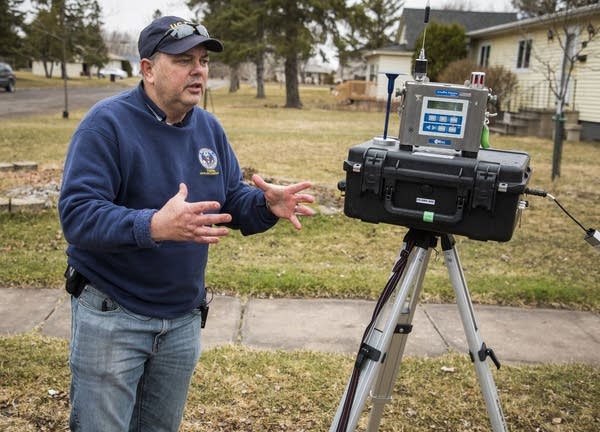Husky Energy refinery blast in Wisconsin: What we know

Go Deeper.
Create an account or log in to save stories.
Like this?
Thanks for liking this story! We have added it to a list of your favorite stories.
Updated: April 27, 12:30 p.m. | Posted: April 26, 1:32 p.m.
Here's the latest on the situation following an explosion and fire at the Husky Energy oil refinery in Superior, Wis.
Turn Up Your Support
MPR News helps you turn down the noise and build shared understanding. Turn up your support for this public resource and keep trusted journalism accessible to all.
The fire was reported out just before 7 p.m.
Superior Mayor Jim Paine told residents they could breathe easy as he announced numerous firefighters had successfully extinguished the blaze after it raged for nearly eight hours Thursday.
Paine lifted the mandatory evacuation at 6 a.m. Friday.
Firefighters remain on scene
Fire crews from Duluth remained on the scene Friday to monitor and prevent hot material from causing another fire or any other problems at the site.
Multiple explosions were reported
The first blast came at about 10 a.m. Thursday. The second was at about 12:30 p.m. and numerous explosions were heard throughout the afternoon.
Fires followed both explosions.
What caused the blast?
Authorities said a tank of crude oil or asphalt exploded at the refinery as it was shutting down the plant down for repairs. They have not speculated on what caused that initial explosion or what caused it to reignite.
No deaths were reported
Initial injury reports were unclear. As of early Thursday afternoon, the injury toll was 11. By Friday morning, that number moved up to at least 20. The injured were taken to three area hospitals. One person's injuries were serious. He was listed in good condition on Friday, an Essentia Health spokesperson said.
Federal agencies are investigating
Officials from the U.S. Department of Labor's Occupational Safety and Health Administration and the Chemical Safety Board will investigate.
The Occupational Safety and Health Administration will work with state and local officials and has six months to complete its probe.
The Chemical Safety Board is an independent, non-regulatory federal agency charged with investigating serious chemical incidents.
Evacuations were widespread
At least 3 miles surrounding the refinery and about 10 miles downwind were under evacuation orders Thursday. The mayor said he lifted the order at 6 a.m. Friday.
Air monitoring overnight shows air is safe
An official with the US Environmental Protection Agency said Friday morning monitors found safe air quality around the site.

The evacuation comes close to 26 years after another, larger mass evacuation in Duluth and Superior
On June 30, 1992, several train cars carrying hazardous chemicals — a mixture containing benzene — derailed and fell into the Nemadji River just south of Superior, creating a toxic cloud of benzene vapors that eventually grew to 20 miles long and 5 miles wide, the Duluth News Tribune later recounted.
The refinery gets heavy crude from the Alberta tar sands in Canada, and lighter crude from North Dakota's Bakken region
It processes around 50,000 barrels per day and has a storage capacity of 3.6 million barrels. It makes gasoline, asphalt and other products.
The Superior refinery, which dates back to the 1950s, is much smaller than the one near the Twin Cities
Flint Hills oil refinery, south of St. Paul in Rosemount, processes 600,000 barrels
Calgary, Alberta-based Husky Energy has owned the refinery for about a year
It purchased the facility from Indianapolis-based Calumet Specialty Products Partners last year for over $490 million. It is Wisconsin's sole refinery.
The Occupational Safety and Health Administration fined the refinery's owner $21,000 in 2015
That's according to the Duluth News Tribune, which said it was the only OSHA enforcement action against the refinery in two decades. The fine was for emergency response and flammable liquids violations, and the problems were resolved that year.
Authorities ordered an evacuation of much of Duluth, Superior and the surrounding area, affecting more than 30,000 people.
The Associated Press contributed to this report.


